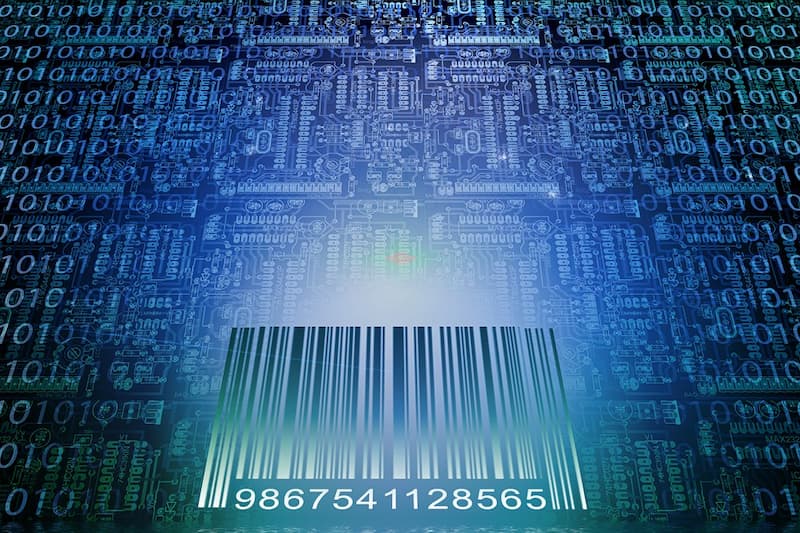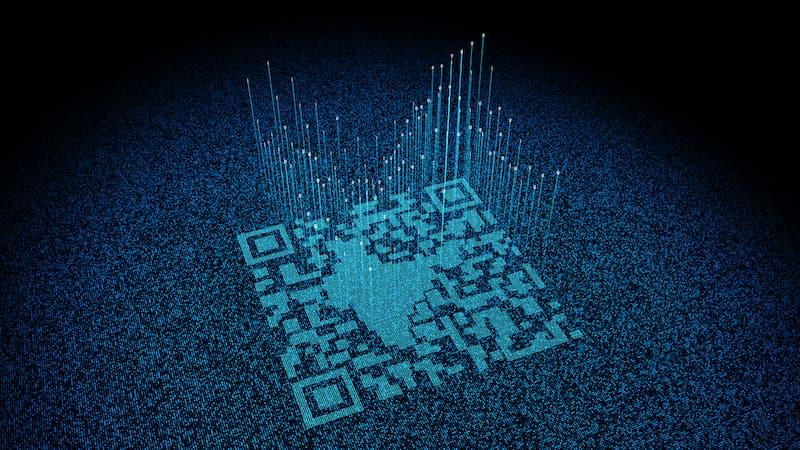Barcode label design and technology have significantly developed over the decades to fulfil many roles within various sectors. Therefore, the idea of an organisation being limited to a single linear barcode system is severely outdated as new, improved designs optimise virtually every working process from fulfilment, maintenance, automation and more.
Considering the immense impact that new label technology has had on the world over the decades, the possibilities of what they will achieve in the future are seemingly endless. Read on to learn about these recent innovations and what is predicted in the coming years.

Labelling for Intelligent Edge Solutions
Intelligent Edge Solutions offer a range of benefits for businesses, including faster data processing and analysis, improved security, and greater flexibility and scalability. In addition, by moving data processing and analysis closer to the source at the network’s edge, Intelligent Edge Solutions reduce latency and improve the speed and accuracy of decision-making. This particularly benefits manufacturing, healthcare, and logistics industries, where real-time data insights will help improve efficiency and reduce costs.
Barcode labels and Intelligent Edge Systems have a close relationship that is becoming increasingly important in today’s digital world and is predicted to grow in popularity in the coming years.
Intelligent Edge Systems use barcode label information to optimise and automate various processes, from inventory management to supply chain tracking. For example, a warehouse management system will use barcode labels to identify and track products as they move through the warehouse, while an Edge device will capture and process this information in real time. This enables the system to optimise inventory levels, reduce waste, and improve order accuracy and fulfilment.
In combination, the high-quality barcode labels provide a reliable and cost-effective way to identify and track products, furthermore, Intelligent Edge Systems provide insights into barcode label data that were previously unavailable. By analysing the data captured from barcode labels, Edge systems will identify patterns and trends used to make informed decisions. For example, an Edge system detects when a particular product is consistently low in stock and triggers a reorder automatically. In addition, the endless combination and development of barcode labels and Intelligent Edge Systems improve the security of supply chain operations.

Digital Twinning for Label Design Testing
Areas such as smart factories and Industry 4.0 require highly effective labels, and support for digitising barcode labelling technology has become increasingly necessary. Optimising barcode labels for efficiency has been an ongoing process, and the emergence of digital twins will continue to aid barcode label design in the future significantly. Initially developed for machine and product design, the concept of digital twins has been adapted as a barcode label design software, resulting in various beneficial outcomes.
Digital twins for barcodes serve as a development tool to help manufacturers test designs for physical labels before printing. Utilising computer-aided design (CAD) software, a highly accurate representation of the proposed physical label is created, allowing manufacturers to check the performance of the design before committing it to the barcode printer. This technology is also useful for tracking created labels when in use.
By using digital tools to model, simulate, and analyse the behaviour of physical barcodes, digital barcode twins offer an avenue for optimising and enhancing their performance. Labels created using this technology have the potential to increase productivity, accuracy, and efficiency across various industries by helping identify potential issues before committing the design to the barcode printer.
The success of digital twins is already evident, particularly in international supply chain logistics, where they have had a positive impact on the barcode label design. As digital twin technology continues to evolve, we can expect it to play an increasingly crucial role in future barcode label design and production.

Labels for Supplier E-Commerce
With the growing popularity of E-Commerce stores not going away any time soon, new opportunities for suppliers to embrace B2C commerce (business-to-customer commerce). Suppliers can choose to sell products directly to consumers through an online store or platform without the involvement of intermediaries such as retailers or distributors.
One of the key benefits of B2C e-commerce for suppliers is the ability to control the customer experience from start to finish. Suppliers can design and implement marketing and sales strategies tailored to their target audience by owning the customer relationship and managing the online store or platform.
B2C e-commerce also gives suppliers greater control over pricing, inventory management, and distribution. By selling directly to consumers, suppliers can set their own prices and avoid the fees associated with selling through intermediaries. This can increase profit margins and more control over inventory levels and distribution channels. This is why we predict a surge in the coming years for suppliers ordering product labels for their e-commerce activities as more organisations will communicate with their customers through online stores.
Barcode Systems from GSM Barcoding
Explore what GSM Barcoding can provide to improve your business with our available solutions, from our label design and printing, mobile computers, smart kiosks, and more. We strive to maintain our position as a leader in the field, and if you contact us, we would be happy to discuss how we could fulfil your business’s label needs.


















